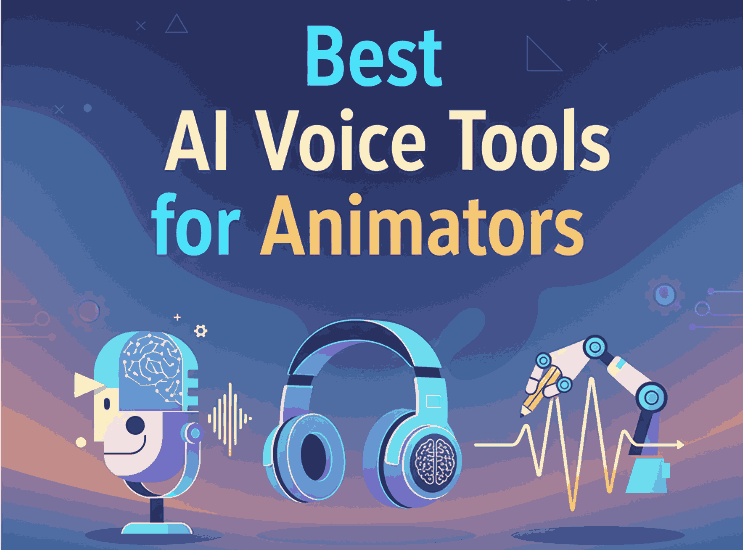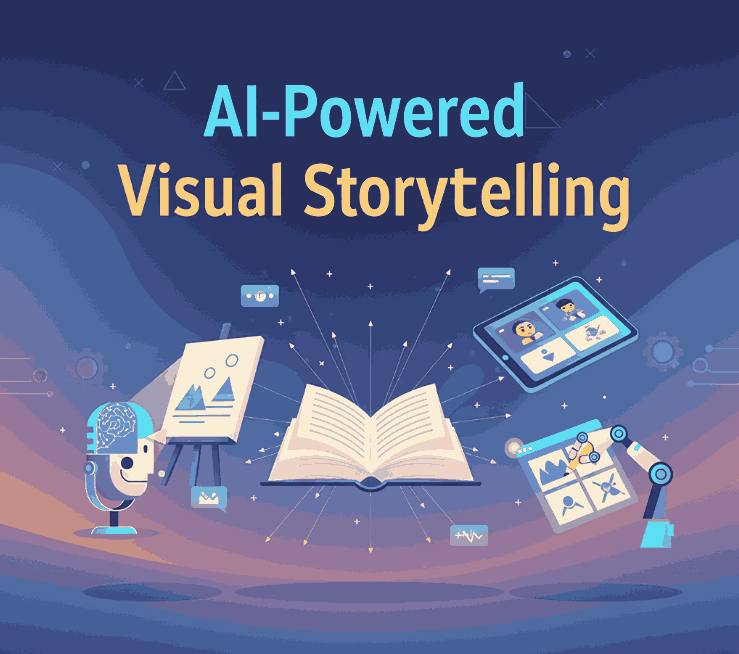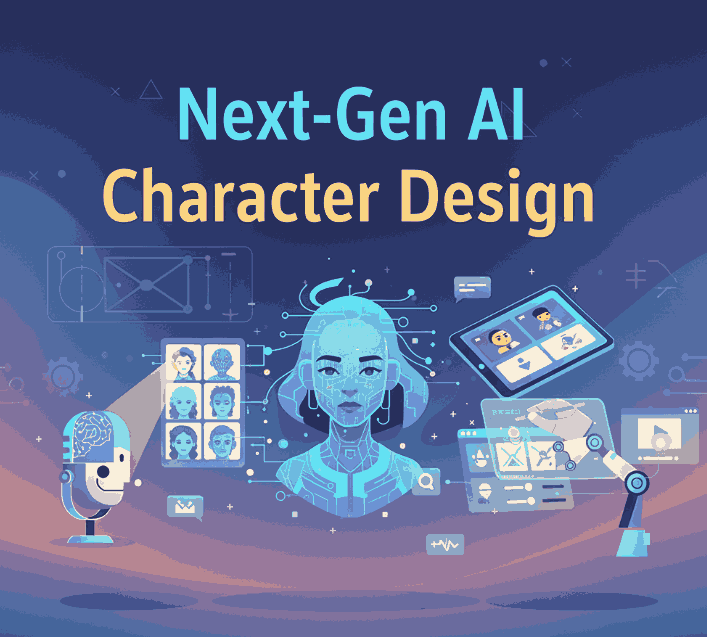
Table of Contents
- Introduction
- Why AI Voice Tools Matter in Animation
- What to Look For in AI Voice Tools for Animation
- Top AI Voice Tools for Animators
4.1 Murf AI
4.2 Descript (Overdub / Voice cloning)
4.3 Replica Studios
4.4 Podcastle
4.5 Typecast - How to Integrate AI Voice Tools into Your Animation Workflow
- Challenges, Limitations & Ethical Considerations
- Using Font Mockups as Visual Assets in Animation Projects
- Conclusion
- References
1. Introduction Best AI Voice Tools For Animators
Audio brings animation to life. Voice inflection, character personality, pacing — these aspects can make or break a viewer’s connection. For small studios or solo animators, hiring voice actors or renting a studio can be costly. Fortunately, Best AI Voice Tools For Animators are evolving fast, offering powerful, flexible, and affordable solutions.
In this guide, we’ll dive into what features matter most, review top AI voice platforms suited for animation work, and discuss how to integrate them into your pipeline. We’ll also touch on how your font assets (mockups) can appear in animations as visual elements.

2. Why Best AI Voice Tools For Animators Matter
- Cost Efficiency: You can generate voiceovers without hiring a voice actor for every line.
- Speed & Iteration: Quickly revise dialogue and hear updates instantly, instead of rebooking studio time.
- Variety & Flexibility: Many platforms offer multiple character voices, accents, emotional styles.
- Scalability: For projects with many characters or language versions, AI makes it manageable.
Murf, for example, markets itself as having “engaging animation voiceovers with just a couple of clicks” across 120+ AI voices.
Descript enables voice cloning and is used by creators to generate animation voiceovers.
Replica Studios emphasizes creating unique voices for characters in animation.
3. What to Look For in Best AI Voice Tools For Animators
When choosing a tool, animators should prioritize:
| Feature | Why It Matters in Animation |
|---|---|
| Voice character & expressiveness | Characters need personality, not flat robotic tone |
| Emotional control | Ability to adjust pitch, tone, stress, pauses |
| Lip-sync / timing alignment | Dialogue must align with mouth movements |
| Multiple voice profiles | For supporting cast, background voices |
| Language & accent support | For localization or diverse audiences |
| Export / API / integration | Must integrate with animation software tools |
| Licensing & usage rights | Ensure commercial use is allowed |
4. Top Best AI Voice Tools For Animators
Here are several standout platforms to consider:
4.1 Murf AI
Murf offers a broad library of over 120 voices across multiple accents and is explicitly marketed for animation voiceover use.
Strengths: expressive voices, ease of use, synchronization with video timelines.
4.2 Descript (Overdub / Voice Cloning)
Descript is popular in the audio/video editing world. It supports voice cloning (Overdub) and generating voiceovers. Creators use it to generate character dialogue in animations.
Strengths: integration with video editing, fine control, ease of use.
4.3 Replica Studios
Replica emphasizes creating unique character voices with personality, emotion, and style. Their “Voice Lab” tool allows blending and customization.
Strengths: character voice variety, localization, studio-level voice quality.
4.4 Podcastle
Podcastle offers “voiceover animations” functionality—allowing you to choose AI voices, assign to characters, and export voiceovers.
Strengths: simplicity, fast prototyping of dialogue for animations.
4.5 Typecast
Typecast (by Neosapience) is a text-to-speech and avatar generation platform supporting emotionally expressive voices, making it a strong contender for animated storytelling.
Strengths: emotional control, avatar sync, expressive voice output.
5. How to Integrate AI Voice Tools into Your Animation Workflow
- Script & Voice Design: Write scripts and choose voice styles early.
- Generate Voice Clips: Use one of the above tools to produce voice lines, customizing emotional tone and pacing.
- Export & Sync: Export audio and match with animation frames (lip-sync). Some platforms support integration/export to animation software.
- Iterate & Refine: Adjust pace, pronunciation, pacing. AI tools make this faster than re-recording.
- Finalize Mix: Add background ambience, effects, music, and polish audio levels.
- Render & Test: Preview with animation, adjust where voice doesn’t match facial expressions or timing.
Where lip sync is needed, you may combine AI voice output with facial animation tools or plugins. For example, academic tools like Audio2Rig use deep learning to generate facial animation keys from audio.

6. Challenges, Limitations & Ethical Considerations
- AI voices may still sound synthetic, especially in emotional extremes or subtle delivery.
- Pronunciation, accents, or emphasis may be off—manual tweaking is often needed.
- Licensing / rights: ensure commercial use is allowed in your plan.
- Voice cloning & impersonation risks: using real voice likenesses without permission can lead to legal and ethical issues.
- Overreliance on AI may reduce variety or human nuance.
7. Using Font Mockups as Visual Assets in Animation Projects
While voice gives audio depth, visuals also matter. In animated branding or promotional animations, you may show mockups or animated text overlays using your fonts. Here are some font assets you could animate:
You can animate titles, lower thirds, captions, or transitions using these fonts, synchronized with the character voices. This unity of audio and typography elevates the storytelling and branding presence.
8. Conclusion
AI voice tools are becoming indispensable in the animator’s toolkit. The best AI voice tools for animators today—like Murf, Descript, Replica, Podcastle, and Typecast—offer expressive, efficient alternatives to traditional voice production. While not without limitations, they empower creators to prototype, iterate, and produce voiceovers faster and often at lower cost.
When paired with high-quality visual assets (such as your custom fonts in animated mockups), the result is animations that feel polished, coherent, and alive. Experiment, iterate, and combine tools wisely—and your characters will speak with as much personality as they move on screen.
